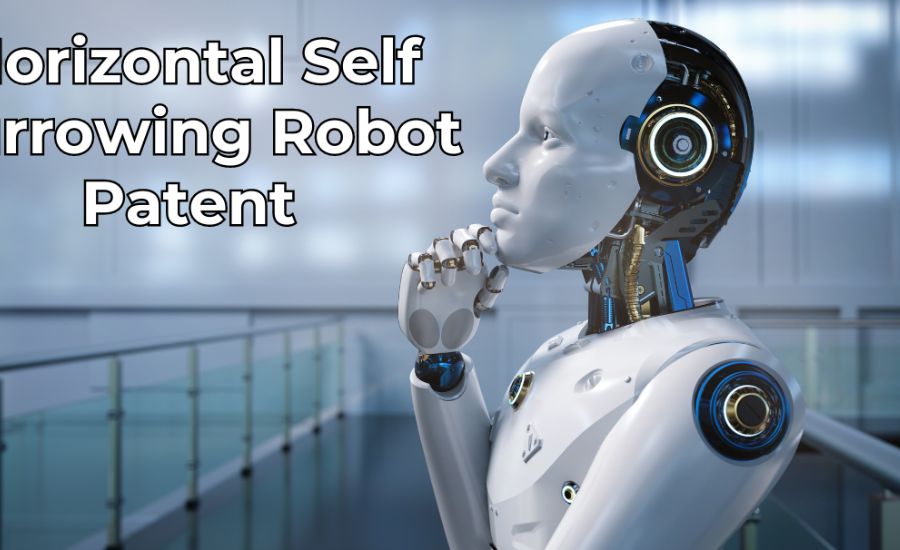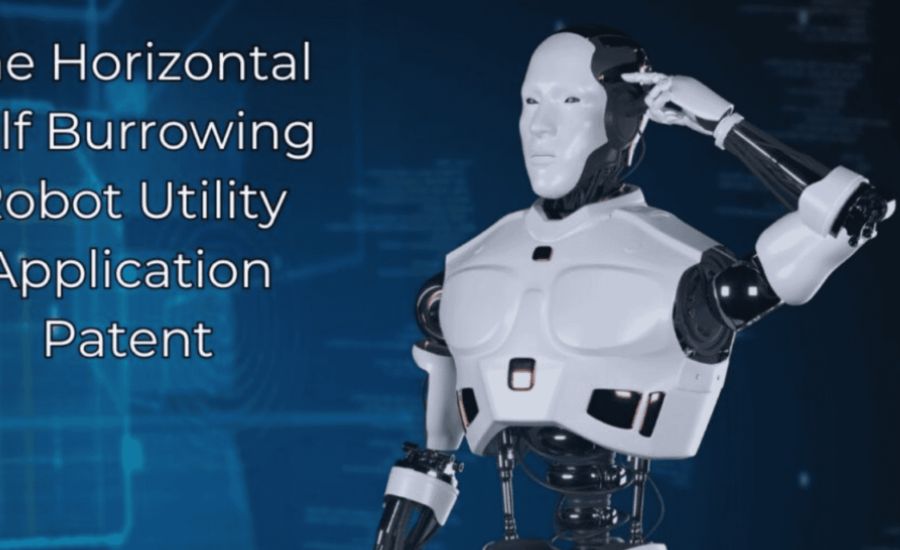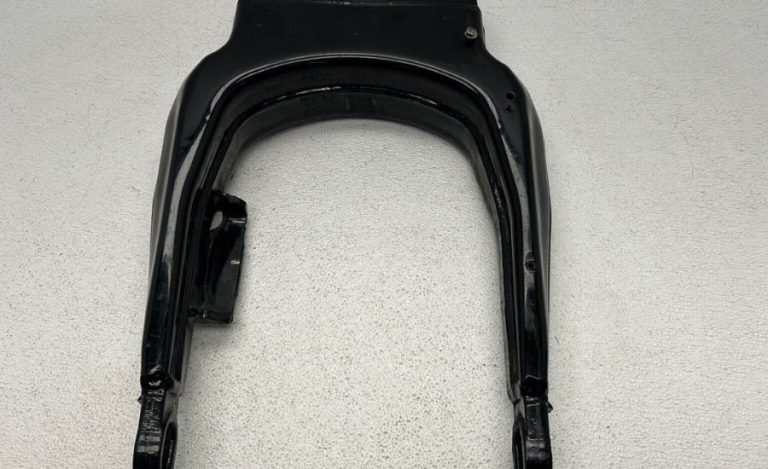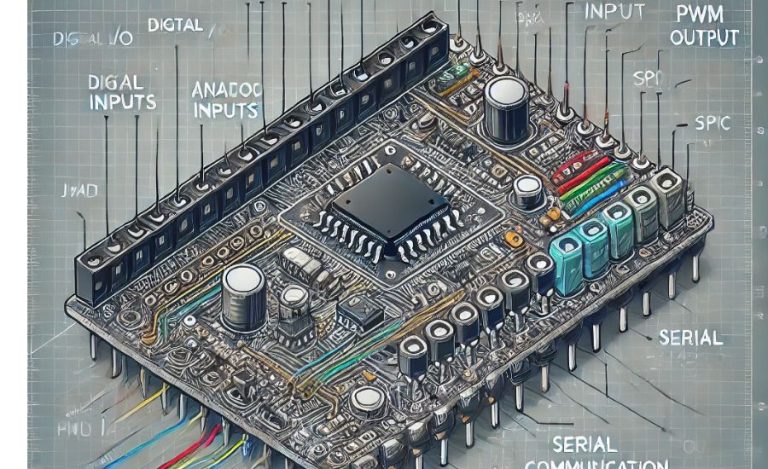Us Patent Application horizontal self burrowing robot, Installing & More
Introduction to Us Patent Application horizontal self burrowing robot
The rapidly advancing field of robotics has introduced horizontal self-burrowing technology, enabling machines to autonomously dig underground without human intervention. This innovation revolutionizes industries by streamlining processes in sectors such as manufacturing and environmental conservation. In infrastructure development, these robots efficiently lay pipelines and cables with minimal excavation, reducing environmental disruption and lowering labor costs. In urban settings, they offer a less intrusive alternative to traditional methods.
Additionally, in environmental monitoring, they facilitate soil testing and groundwater assessment, accessing challenging terrains safely. The industrial sector benefits from improved precision and reduced human error, especially in oil, gas, and telecommunications. Securing a patent for this technology is vital for protecting intellectual property and fostering further research and development. As demand for sustainable solutions increases, horizontal self-burrowing robotics represent a significant advancement, positioning businesses at the forefront of innovation to meet tomorrow’s complex challenges.
Comprehending Robots That Burrow Horizontally
A horizontal self-burrowing robot is an extremely sophisticated machine made to burrow underground on its own without assistance from humans. These robots are designed for horizontal excavation, in contrast to conventional drilling equipment, which often move vertically. They are therefore perfect for jobs like installing cables and pipelines or carrying out subterranean inspections.
These robots, which are outfitted with sophisticated materials, cameras, and sensors, can move through different kinds of soil and avoid obstructions like underground pipelines or boulders. Certain types may be operated autonomously or remotely, which makes them suitable for activities that need both manual supervision and complete automation.
Software for horizontal self-burrowing robots is utilized in many different fields to provide innovative solutions to challenging issues. These robots are revolutionizing a number of industries, including environmental management, telecommunications, energy, and construction.
Construction and Civil Engineering
Using conventional techniques to install subterranean pipes and wires can be labor-intensive and time-consuming in the building industry. This technique is automated using horizontal self-burrowing robots, which dig underground to position utilities like electricity wires and pipes without requiring a lot of trenching. This reduces surface disruption, minimizes labor costs, and enhances the efficiency of infrastructure projects. For instance, in urban environments, where surface disturbances can lead to traffic issues or damage to existing structures, these robots offer a streamlined solution that minimizes inconvenience.
Telecommunications and Data Networks

In telecommunications, the installation of underground cables for internet and mobile services often requires extensive trenching, which can damage roads and landscapes. Horizontal self-burrowing robots offer a more efficient method of laying cables while avoiding surface disruption. They can be deployed in challenging environments, such as beneath rivers or rocky terrain, thereby revolutionizing how data networks are installed and maintained. This efficiency not only reduces costs but also enhances service reliability.
Oil and Gas Pipelines
Subterranean pipelines are widely used by the oil and gas sector to move commodities over great distances. Horizontal self-burrowing robots enhance this process by precisely tunneling underground, which helps avoid existing utilities and environmental hazards while minimizing surface impact. Additionally, these robots can inspect and maintain pipelines, ensuring that leaks or damages are promptly identified and addressed. This capability significantly lowers the environmental risks associated with oil and gas transportation.
Environmental Management and Agriculture
Horizontal self-burrowing robots are becoming vital tools in environmental management. They can conduct subsurface monitoring, soil sampling, and data collection without disturbing the surface environment. When evaluating soil contamination, groundwater levels, and the impact of agricultural activities on soil health, this functionality is especially helpful. These agricultural robots can improve farming operations by putting in subterranean irrigation systems without uprooting crops and installing sensors for real-time soil moisture and nutrient level monitoring
Installing and Maintaining Utilities
Underground system installation and maintenance are common tasks for utility businesses, which include those in the gas, power, and water sectors. Horizontal self-burrowing robots reduce the need for labor-intensive excavation and provide realistic solutions for these chores.Whether for new infrastructure installations or maintaining existing systems, these robots help utilities operate more efficiently while reducing disruption to the public. In emergency situations, such as water or gas leaks, a horizontal self-burrowing robot can be rapidly deployed to inspect and repair underground systems with minimal additional damage to roads or property.
The Impact on Workforce Dynamics
While horizontal self-burrowing robots decorate operational performance, additionally they have extensive implications for personnel dynamics. As industries undertake those technologies, the character of jobs within sectors like construction, telecommunications, and environmental control will evolve. Workers will shift from guide labor to roles that emphasize oversight, programming, and maintenance of those sophisticated machines. This transition provides opportunities for a body of workers development and schooling programs targeted on equipping workers with the abilities needed to operate and innovate inside this advanced technological landscape.
Regulatory Considerations and Compliance
As the deployment of horizontal self-burrowing robots turns into more giant, regulatory frameworks will want to evolve to cope with the specific demanding situations these technologies present. Issues surrounding protection requirements, environmental regulations, and the protection of existing underground infrastructure will require careful attention. Policymakers have to interact with enterprise specialists to create suggestions that make certain the safe and powerful use of this technology, balancing innovation with the want to protect public and environmental interests.
The Environmental Sentinel: Monitoring Capabilities of the Horizontal Self-Burrowing Robot

Horizontal self-burrowing robots (HSBR) play a key role in environmental monitoring by offering a non-invasive solution for tracking critical data. These robots can measure soil contamination, groundwater levels, and other environmental indicators without requiring disruptive excavation. Their ability to operate autonomously in sensitive ecosystems or densely populated urban areas makes them ideal for projects where minimizing surface disturbance is essential. This advanced technology provides valuable insights into environmental conditions while preserving the integrity of the monitored areas, making it a more sustainable and efficient approach compared to traditional methods.
Broadening Horizons: Applications of the Horizontal Self-Burrowing Robot
Beyond infrastructure and environmental monitoring, horizontal self-burrowing robots (HSBR) are also valuable in various other fields:
- Disaster Management: HSBRs can be deployed to assess and repair damaged underground utilities after natural disasters, minimizing further disruption.
- Archaeological Exploration: They enable non-invasive exploration of archaeological sites, preserving the integrity of historical artifacts and structures.
- Agricultural Engineering: HSBRs assist in soil analysis and help implement subterranean pest management, optimizing crop health while reducing the need for invasive practices.
These versatile robots offer innovative solutions across multiple industries, ensuring efficiency and minimal environmental impact.
Overcoming Obstacles: Challenges and Solutions in Horizontal Self-Burrowing Robotics
Although horizontal self-burrowing robots (HSBR) offer significant advantages, they still encounter technical and operational challenges. Navigating through varied soil compositions and avoiding underground obstacles, such as rocks or utilities, remain difficult tasks. To address these issues, current research is aimed at improving sensor technology and refining AI algorithms, allowing the robots to better detect and navigate around potential hazards. These advancements are crucial for enhancing the reliability and efficiency of HSBRs, enabling them to perform more effectively in diverse and unpredictable environments.
How the Horizontal Self-Burrowing Robot Works
Gaining insight into the functionality of the U.S. patent application for a horizontal self-burrowing robot reveals its impressive capabilities:
Burrowing Mechanism
This robot employs specialized rotating blades or augers designed to effectively penetrate various soil types and densities. These components ensure efficient excavation, adapting to the challenges presented by different underground materials.
Movement and Navigation
The robot features tracks or wheels that allow for horizontal movement underground. Its sophisticated navigation system integrates sensors and cameras to identify obstacles and adhere to predetermined paths, facilitating accurate and reliable movement.
Data Acquisition
Additionally, the robot can be outfitted with data collection instruments, such as cameras and environmental sensors. These tools gather critical information about subsurface conditions, which can inform analysis and support decision-making processes.
Key Features of the Horizontal Self-Burrowing Robot
Autonomous Navigation
The robot features sophisticated sensors and algorithms that enable it to navigate autonomously through diverse soil types. This functionality reduces the need for human oversight, allowing for more efficient operations.
Adaptable Mechanisms
Its design incorporates adaptable mechanisms that respond to varying soil conditions. Whether encountering loose sand or dense clay, the robot adjusts its burrowing methods to maintain optimal performance.
Energy Efficiency
A key advantage of this technology is its energy-efficient design. The robot employs advanced power management systems that conserve energy, prolonging operational time and decreasing the need for frequent recharging.
Real-time Data Collection
Equipped with multiple sensors, the horizontal self-burrowing robot can gather valuable data in real time. This capability facilitates immediate analysis of soil conditions, moisture levels, and the detection of underground structures or contaminants.
Education and Research Development

The developing discipline of horizontal self-burrowing robotics also opens new avenues for training and studies. Academic institutions are increasingly integrating robotics and automation into their curricula, preparing students for careers in this unexpectedly evolving industry. Research initiatives focusing on improving the competencies of these robots, which include improvements in AI and device mastering for higher navigation and selection-making, are essential for pushing the bounds of what these machines can obtain. Working together, academic institutions and business leaders may stimulate innovation and lead to the creation of robots with improved performance and efficacy through future technologies.
Eco-Friendly and Sustainable Practices
The impact that horizontal self-burrowing robots will have on sustainability cannot be overstated, especially as the field tackles more difficult environmental conditions. These robots contribute to novice practices by reducing floor disturbance and maintaining natural habitats during the development and tracking processes. Their use in installing subterranean utilities lowers the carbon footprint associated with conventional excavation techniques, which frequently call for huge machinery and labor. Additionally, their capacity to do environmental assessments enables them to detect illness and the depletion of valuable resources, enabling preventative actions to save ecosystems.
Economic Implications and Cost-Effectiveness
Investing in a horizontal self-burrowing era can yield tremendous economic benefits. The automation of excavation processes results in full-size reductions in hard work prices and task timelines, allowing groups to allocate sources greater correctly. The reduced need for large floor healing
translates into lower operational costs for utility companies and construction firms. As more organizations recognize these economic advantages, the adoption of horizontal self-burrowing robots is likely to increase, driving further innovation and development within the sector.
The Road Ahead: Future Developments in Horizontal Self-Burrowing Robots
The future of horizontal self-burrowing robot (HSBR) technology is focused on increasing automation and miniaturization. The goal is to develop smaller, more efficient models that can handle increasingly complex tasks. Innovations in material science and artificial intelligence are anticipated to significantly enhance these robots’ capabilities while also lowering production costs. As a result, we can expect HSBRs to become more versatile and accessible, making them invaluable tools across various industries in the coming years.
Case Studies and Success Stories
Real-international applications of horizontal self-burrowing robots are already demonstrating their ability. For example, in urban infrastructure projects, cities have pronounced good sized discounts in excavation time and floor disruption whilst the use of these robots for application installations. Similarly, in environmental management, organizations have applied these robots for non-invasive soil tests, yielding precious statistics with out compromising atmosphere integrity. Documenting those achievement testimonies no longer best highlights the effectiveness of the technology but also serves as a treasured useful resource for industries thinking about its adoption.
Integration with Smart City Initiatives
The integration of horizontal self-burrowing robots aligns seamlessly with the smart city projects emerging in city development. As cities strive to come to be more green and responsive to the needs in their citizens, these robots can contribute substantially by lowering the footprint of construction activities and minimizing disruptions to daily existence. Their capacity to function autonomously allows for nighttime or off-peak hour deployments, in addition lessening the impact on traffic and nearby companies. This generation enhances not only infrastructure development however additionally the overall exceptional of urban lifestyles by means of maintaining critical offerings with minimal disruption.
Cross-Industry Collaborations
The potential of horizontal self-burrowing robots extends beyond conventional sectors. Their packages are drawing hobby from diverse industries, main to thrilling move-industry collaborations. For instance, partnerships between environmental scientists and tech developers are resulting in progressive uses of these robots for habitat recovery tasks. Similarly, collaborations with agricultural corporations are focusing on the usage of horizontal self-burrowing generation for precision farming, allowing farmers to install irrigation structures and soil sensors more effectively. These partnerships emphasize the versatility of the era and spotlight the capacity for novel packages in areas now not historically associated with robotics.
What is a Horizontal Self-Burrowing Robot?

A horizontal self-burrowing robot is an innovative machine designed to autonomously tunnel through the earth in a horizontal direction. Unlike conventional drilling or trenching techniques that often lead to significant surface disruption, this robot employs sophisticated sensors and navigation systems to operate underground with minimal impact on the surface. Its self-guided mechanisms allow it to adhere to pre-programmed paths, making it particularly well-suited for applications such as laying pipelines, inspecting utility lines, or monitoring subsurface environmental conditions.
Equipped with rotating blades or drills, the robot efficiently cuts through a variety of soil types and underground materials. It features tracks or wheels that facilitate steady movement. Most notably, its autonomous operation requires minimal human oversight after it has been initiated.
Future Trends in Horizontal Self-Burrowing Robotics
Looking ahead, numerous tendencies are likely to form the destiny of horizontal self-burrowing robots. Advances in AI and machine mastering will improve navigation and obstacle detection, allowing those robots to work autonomously in increasingly more complex environments. Additionally, tendencies in battery generation and renewable electricity assets might also beautify their operational sustainability, bearing in mind longer durations of use without interruption. The integration of the IoT era will facilitate actual-time tracking and facts sharing, in addition enhancing decision-making abilities for agencies and environmental businesses alike.
FAQs about Horizontal Self-Burrowing Robots
1. What is a horizontal self-burrowing robot?
A horizontal self-burrowing robot is a machine designed to tunnel underground in a horizontal direction without needing human intervention. It uses advanced sensors and navigation systems to minimize surface disruption, making it ideal for tasks like installing utility lines or conducting underground inspections.
2. How do these robots navigate underground?
These robots navigate using sophisticated sensors and cameras that help them detect obstacles and follow pre-programmed paths. This autonomous navigation allows them to operate efficiently in various soil types without human control.
3. What are the main applications of horizontal self-burrowing robots?
They are used in several sectors, including construction for trenching utility lines, telecommunications for installing underground cables, oil and gas for pipeline maintenance, and environmental management for soil analysis and monitoring groundwater.
4. How do horizontal self-burrowing robots minimize environmental impact?
By operating underground and using precise tunneling techniques, these robots reduce surface disruption and the associated risks of traditional digging methods, which can damage roads and existing infrastructure.
5. What technologies are used in these robots?
Horizontal self-burrowing robots are equipped with rotating blades or drills for excavation, sensors for navigation and data collection, and advanced power management systems for energy efficiency.
6. Are these robots capable of real-time data collection?
Yes, many models are equipped with sensors that allow them to collect real-time data on soil conditions, moisture levels, and potential underground contaminants, which can be useful for analysis and decision-making.
7. What are the future developments expected in this technology?
The future of horizontal self-burrowing robots is focused on increased automation and miniaturization, aiming to create smaller, more efficient models that can perform complex tasks while reducing production costs.
8. How do patents benefit the development of horizontal self-burrowing robots?
Patents protect the innovations and designs of these robots, encouraging companies to invest in research and development. This legal protection helps ensure that inventors receive recognition and financial benefits from their work, promoting further innovation in the robotics field.
Read More Information About Technology At discoverparadox






